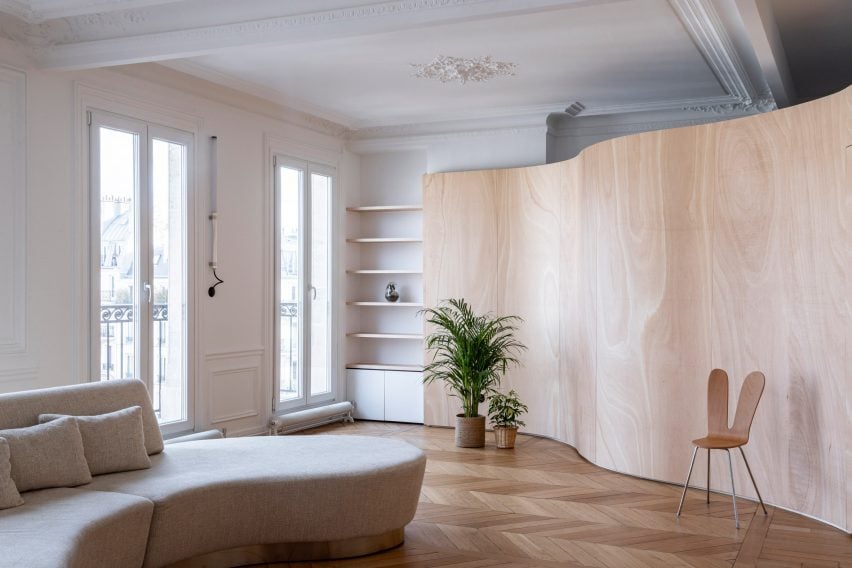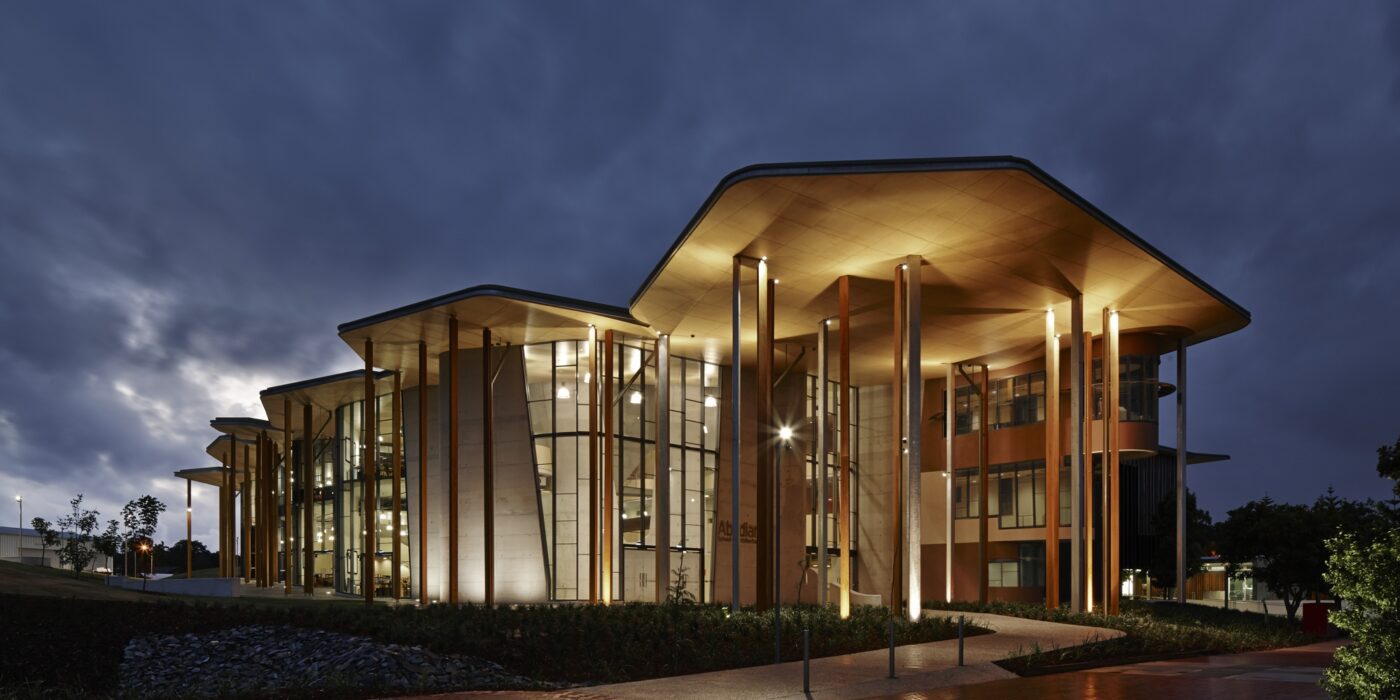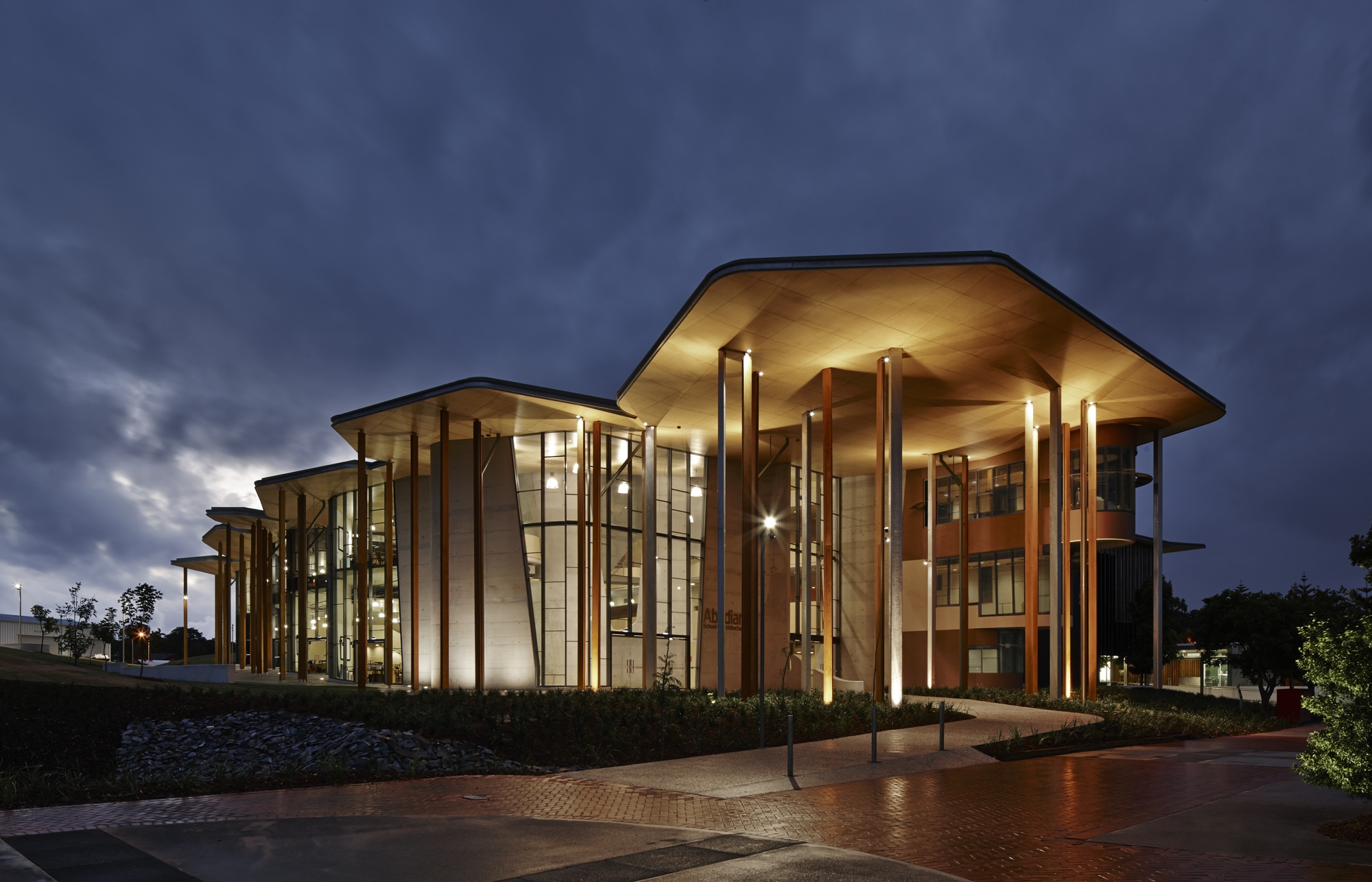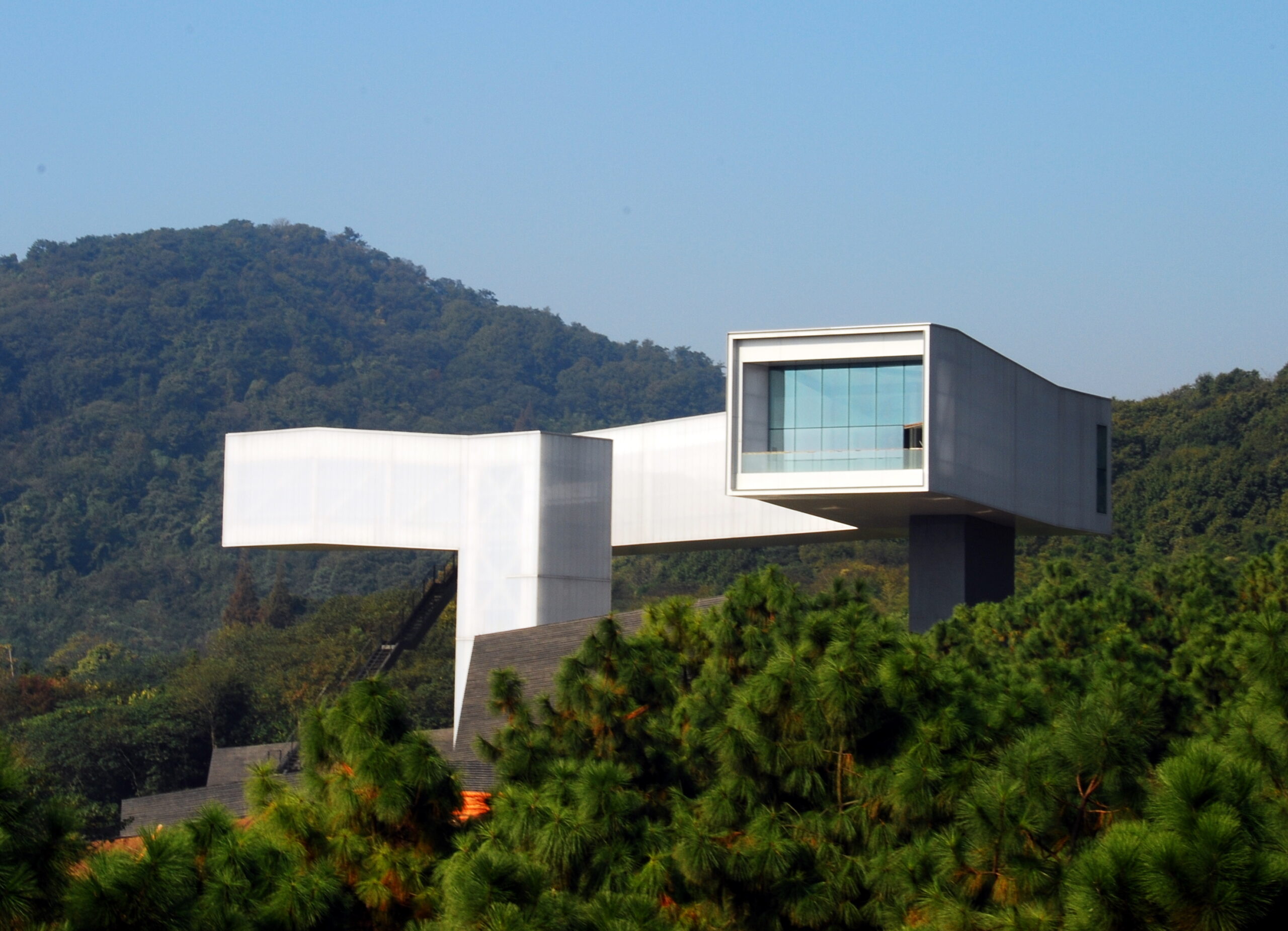Six renovated Parisian apartments in historical Haussmann-era buildings
Period details are mixed with contemporary interventions inside these renovated apartments in Paris, built in the mid-19th century during Georges-Eugène Haussmann’s reconstruction of the French capital.
In his role as the prefect of the Seine département under Napoleon III, Baron Haussmann was responsible for creating the network of boulevards that still define the city’s urban landscape today.
The homogenous apartment buildings flanking these boulevards were designed to strict guidelines, all made from cream-coloured stone with a steep four-sided mansard roof and no more than six storeys.
Although Haussmann was less prescriptive about the building’s interiors, they generally feature high ceilings and parquet floors alongside elaborate mouldings and boiserie.
Read on for six examples of how architects and interior designers have brought these apartments into the 21st century, including a book lover’s loft and two flats combined to form a family home in the Marais.
This is the latest in our lookbooks series, which provides visual inspiration from Dezeen’s archive. For more inspiration see previous lookbooks featuring bedrooms with minimalist interiors, concrete kitchens and marble-lined bathrooms.
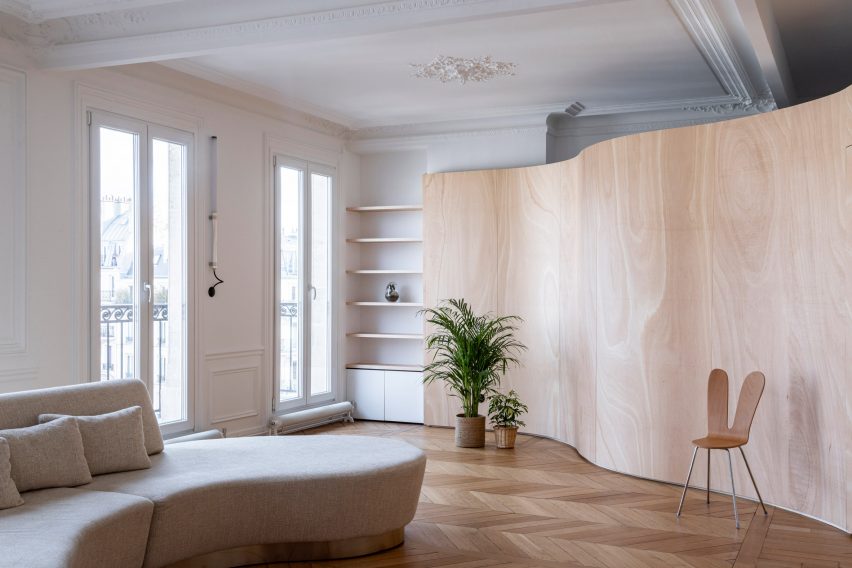
Wood Ribbon apartment by Toledano + Architects
Original details such as parquet floors and ornate ceiling plasterwork were retained in the renovation of this apartment, which had been left largely untouched since the end of the 19th century.
But local studio Toledano + Architects tore down several partition walls to create a more open floorplan, traversed by a snaking plywood wall that roughly divides the apartment into three zones while providing tactical storage in the living room and kitchen.
“I really wanted to enhance this dichotomy between ancient and contemporary,” founder Gabrielle Toledano told Dezeen. “It’s very relevant in a city like Paris where both are in a constant dialogue.”
Find out more about Wood Ribbon apartment ›
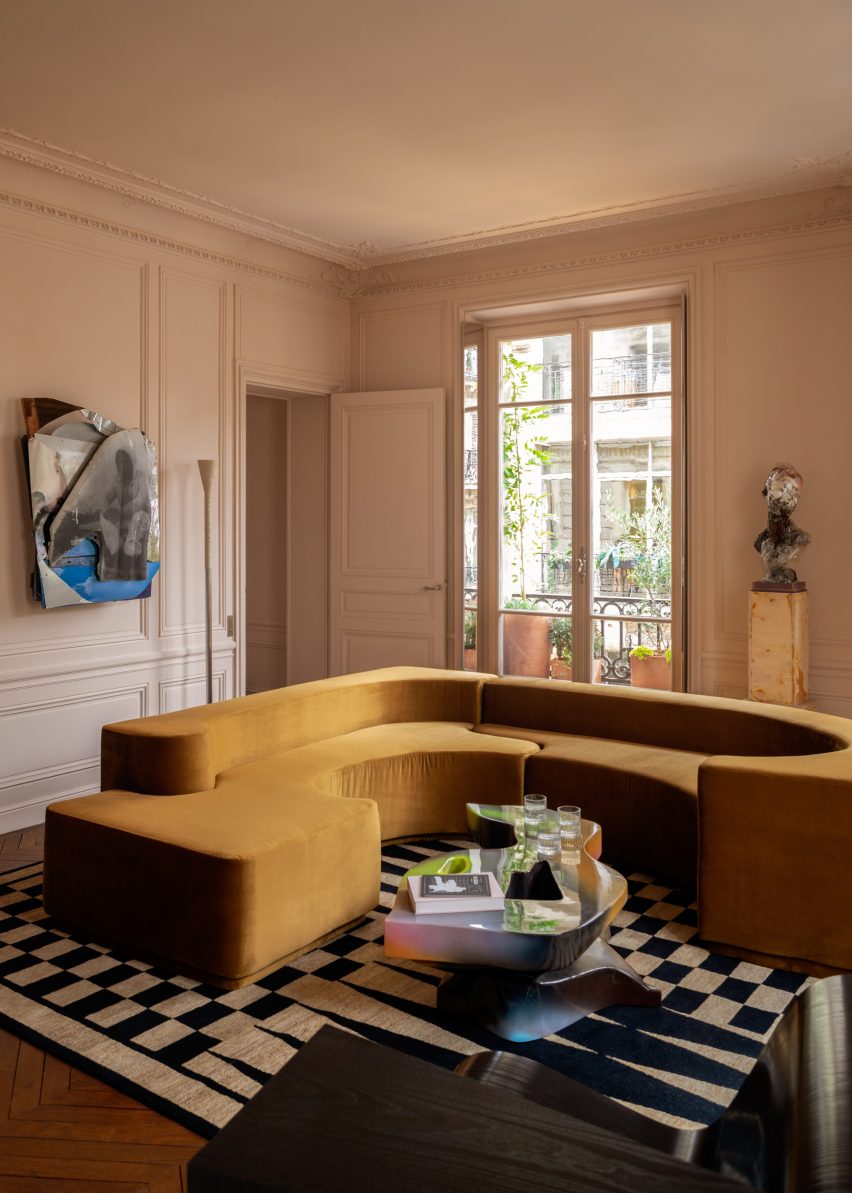
Apartment Canal Saint Martin by Rodolphe Parente
French interior designer Rodolphe Parente made only a few minor architectural interventions when overhauling this apartment in Canal Saint-Martin, exposing long sealed-off doorways and creating a hybrid dining room and kitchen.
Instead, he modernised the apartment by contrasting original details such as mouldings with unexpected contemporary details, colours and the “radical” art collection of the owner.
In the bedroom, a vivid purple rug clashes with caramel-coloured walls while in the living room, period wall panelling highlights the modernity of the sofa and the glossy coffee table.
Find out more about Apartment Canal Saint Martin ›
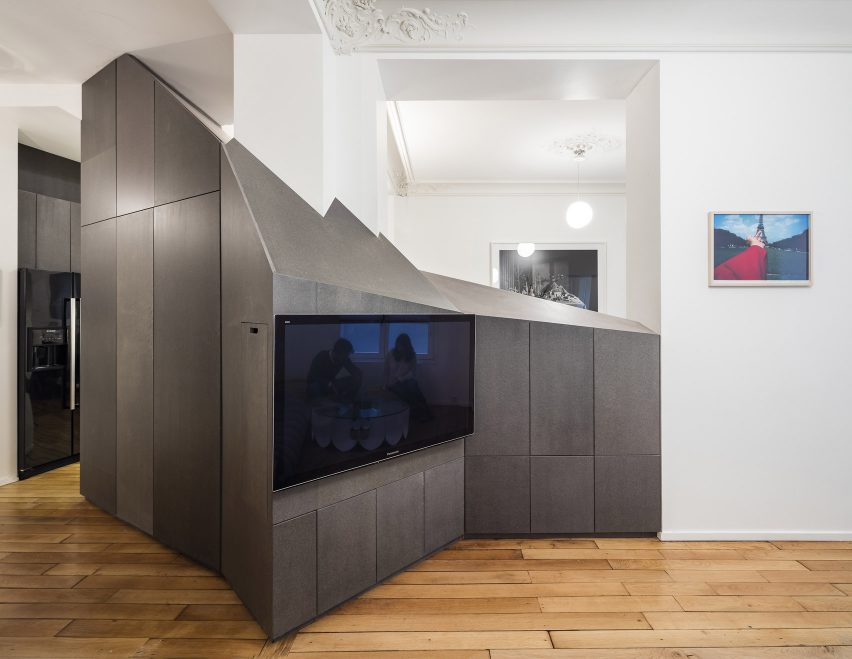
Apartment XIV by Studio Razavi
With several partition walls removed, French office Studio Razavi created a new layout for this apartment by slotting a multi-faceted furniture block made from wood-fibre panels into the remaining gaps.
Its staggered profile creates sightlines between the different areas of the house while framing some of the building’s original Hausmann-style ceiling mouldings.
Painted in a muted slate grey, the furniture block performs a different function in every room – acting as a storage cabinet in the kitchen, a TV mount in the living room and a desk in the study.
Find out more about Apartment XIV ›
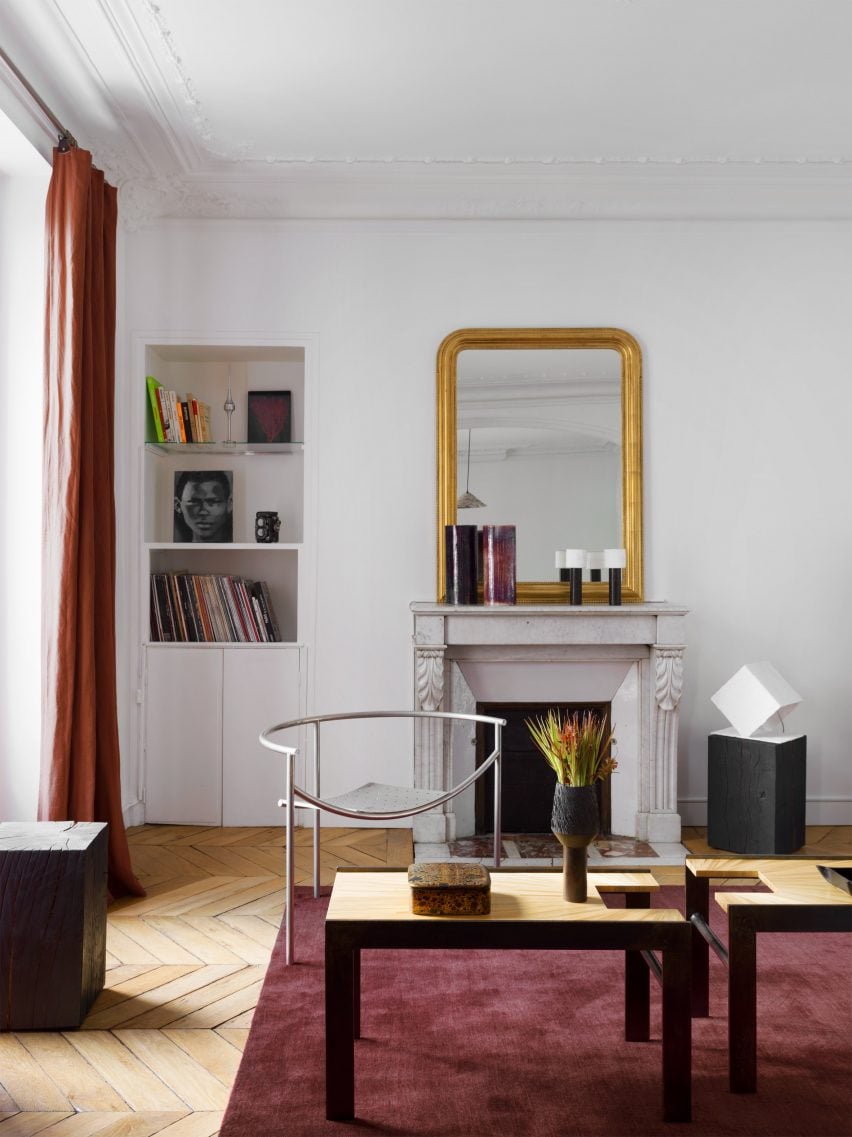
Marais apartment by Sophie Dries
Two flats become one 100-square-metre residence in this renovation project that French architect Sophie Dries completed in trendy Marais for a family of four.
Period details were painted in simple white, providing a contrast with new additions such as the Hans J Wegner chairs and the dyed linen curtains in the living room
“The Haussmannian style was refined and pared down, in order to introduce minimal lines better suited to a modern family,” Dries explained.
Find out more about Marais apartment ›
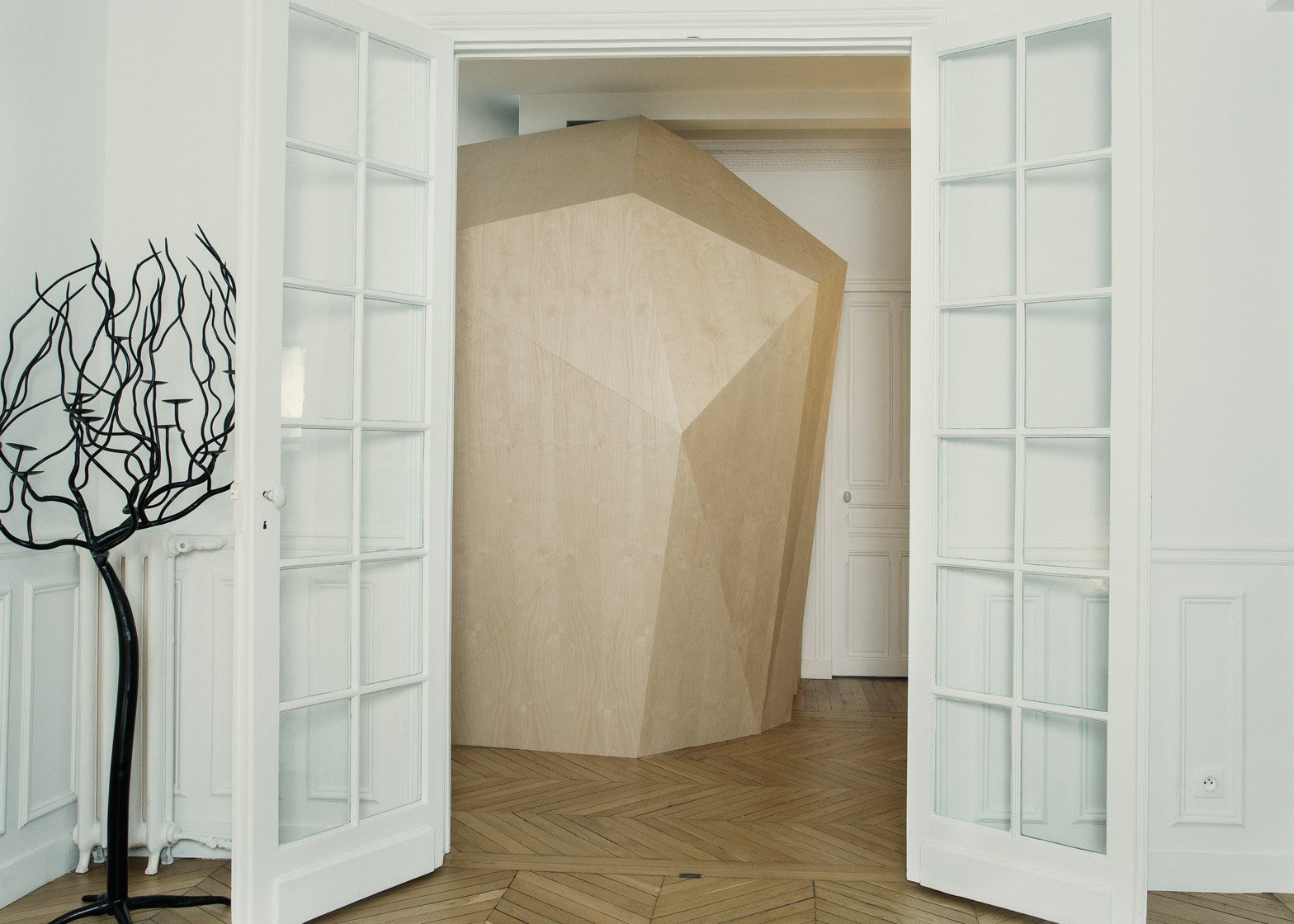
Enter the Diamond by Atelier 37.2
An additional bathroom is housed inside the three-metre-high birchwood volume at the centre of this residence in the French capital, designed by local studio Atelier 37.2.
The sharp lines of the diamond-shaped structure contrast with the apartment’s ornate ceiling mouldings and white-painted walls.
“This tension generates a fictional potential that plays with the imagination of the inhabitants,” said the studio.
Find out more about Enter the Diamond ›
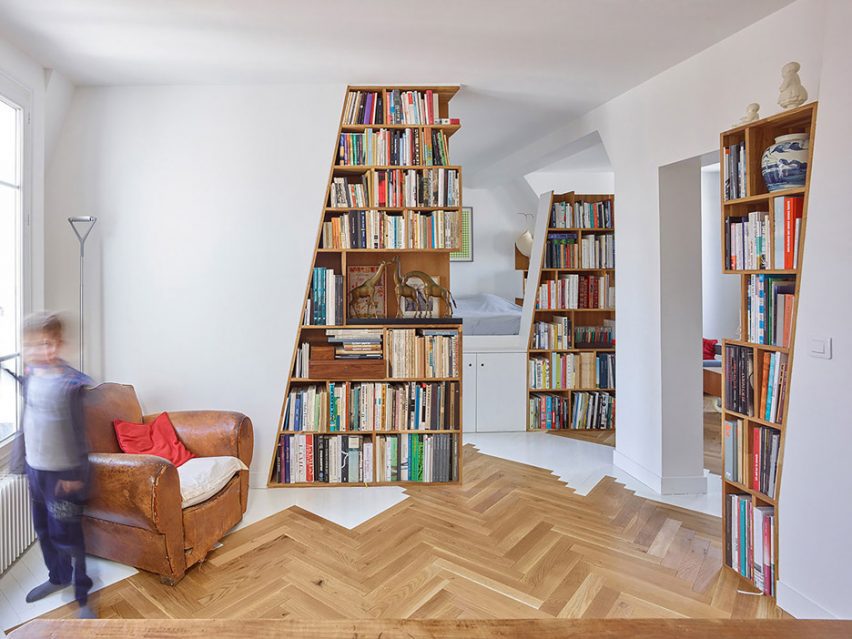
Arsenal loft by h2o Architectes
This three-room loft is set inside the mansard roof of a Haussmann-era building in the Arsenale district, which originally served as servant’s quarters for the apartments below.
Parisian firm h2o Architectes opened up its floor plan to make the most of the top-floor views while installing wooden bookshelves to define different areas and house the extensive library of the apartment’s book-loving owner.
Their timber construction creates a visual connection with the original parquet floors, while the white paint used to brighten walls and other structural elements continues onto some sections of the floor.
Find out more about Arsenal loft ›
This is the latest in our lookbooks series, which provides visual inspiration from Dezeen’s archive. For more inspiration see previous lookbooks featuring bedrooms with minimalist interiors, concrete kitchens and marble-lined bathrooms.

